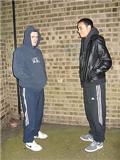Throughout our planning and filming process, we took lots of photographs. Before we started filming, we had to consider the settings and location of our soap opera, so that we could include them within our trailers. Once we had planned out our individual storylines that we wanted to include, we began to look at settings. We needed to use a normal family home for the 'affair' storyline, and we wanted to include as much realism as possible so we decided to use my dad and step-mum's house. The house is a normal family home, and it is not unusual in any way, and it is of normal size and decor so we decided to use the kitchen, hallway and back door entrance.
This is the backdoor entrance where 'the other man' enters
This is the conservatory entrance where the woman enters to greet 'the other man'
This is the kitchen where the woman makes a cup of tea for herself and 'the other man'
This is the front door entrance where the woman says goodbye to her husband
The next setting we decided on was a secluded outside area for the 'drug dealing' storyline. We drove around several areas of St Neots looking for alleyways and other secluded areas that would be appropriate. We needed to bare in mind that because it was winter time, it was dark by half past 4 and so we needed an alleyway with a light to give us extra lighting in case it started to get dark during filming. Unfortunately, we could not find an alleyway that had a light in so we resorted in taking it in turns to wear a light on each of our heads. This was not the most practical of ideas, but it was quite funny and the light was fairly bright and so it gave us much needed extra lighting. We asked the two male actors to wear dark clothing, and tops with hoods on, as they are stereotypical clothing items for drug dealers as they can use the hood to hide thier faces.
This is the alley, it is just a stereotypical, obscure, long alleyway in between two houses
This is one of the 'drug dealers' in the alley
We made both of the 'drug dealer' characters stand in various places in the alleyway, to see where looked the most appropraite. We were looking for a place that was hidden, and so we opted for a corner.
This is another one of the 'drug dealer' characters, this time with the head light shining on him, so we could test out how brigh the light was.
The next setting we needed to decide on was for the 'poisoning' storyline, where an elderly woman is tired of looking after her elderly husband, and decides to eventually kill him. Again, we wanted to be as realistic as possible, so we used my grandparent's bungalow. We even managed to persuade my grandparent to act, which was an added bonus, because again this added to the realism.
This is the dining room, where the elderly male is sat reading the newspaper
This is one angle of the kitchen. After consideration, we decided to shoot the elderly woman from the other end of the kitchen, because there was more light and space.
The kettle is normally placed in quite a small and dark area in the kitchen, so we temporarily moved it to the worktop to ensure that there was enough light and space.
These are the actors (my grandparents!) we decided to use them as actors because they are the same age as the characters, and really look the part.
The next setting is a public park, which we used for the 'peer pressure storyline'. We wanted to use somewhere spacious, and a realistic place that teenagers would go, and we all agreed that a park was the best setting.
This is a photograph I took of the park we wanted to film the 'peer pressure' storyline in. We chose this park because it is large which gave us lots of space to work in, and also lots of different opporunities to experiement with camera shots and angles. We also decided to use it because it is not used very often and this allowed us to be more flexable with our filming schedule.
This is a photograph I took of the park which was more specific. We decided to film near to the slide for several reasons. One main reason is that it was the area that had the most space so that we could try lots of new things out. Another reason is that the floor was of a rubber material, which meant that we could drop the alchohol bottle without it smashing. However, we took along with us a dustpan and brush and a carrier bag just in case the bottle did smash!
























